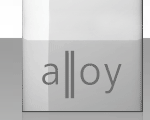« Innovation in Business Story
Experience Led Innovation
Breakthrough:TheAlloy has created better user experiences for a huge variety of businesses, using a proprietary process called Experience Mapping, adapted to suit each particular challenge.
Business:
TheAlloy, United Kingdom
The Story:
 Innovation is exceptionally difficult. Despite centuries of advances and improvements, nine out of 10 new products and services still fail at the point of market entry. This statistic highlights the need to improve innovation activities that help organisations to deliver better returns on innovation investments.
Innovation is exceptionally difficult. Despite centuries of advances and improvements, nine out of 10 new products and services still fail at the point of market entry. This statistic highlights the need to improve innovation activities that help organisations to deliver better returns on innovation investments.By definition, innovation requires collaboration between different people with different skillsets. Traditional innovation models of technology- or marketing-led innovation require different teams to share goals and insights in order to deliver new products and services that deliver competitive advantage – but it is how competitive advantage is defined that is the issue. Companies often launch an innovation defined by an increase in feature performance, for instance, even though few users really understand or are concerned with technical features.
As Alan Greenspan famously explained, one of the reasons for the ongoing financial crisis was the inability of economic and business models to predict human behaviour due to our irrational behaviour. Because people are ruled by emotions, existing models were unable to accurately predict behavioural patterns and decision-making.
This realisation has driven the growth of a new field of called behavioural economics, where our irrationality is rendered predictable by using tools and techniques commonly used in the design process: ethnographic research, workshops and other tools all help to inform businesses about human behaviour. Importantly, many of these techniques have been developed to elicit insights that inform business decisions rather than be led by them.
By predicting behaviour, businesses can choreograph products or services that are more suited to people’s functional and emotional needs. A central tenet of this approach is the idea that people seek out great experiences all the time, be it from a hotel stay, use of a product, or ownership of a car.
There are many examples of failure where excellence in one element of a business offer (product) has been let down by another (service). These show that people are able to decode and deconstruct their purchasing decisions based on a huge variety of factors, all of which combine to form an ‘experience’.
The term User Experience (UX) is a relatively new skillset most commonly found in digital businesses and often focused on screen-based interactions. Many practitioners focus on the delivery of a better user interface, yet its impact can be much wider.
TheAlloy has created better user experiences for a huge variety of businesses, including missile systems, care homes and machine-to-machine (M2M) businesses. All were delivered using a proprietary process called Experience Mapping, adapted to suit each particular challenge.
Experience Mapping breaks down the overall experience into a series of touchpoints where the user interacts with a product or service, and techniques such as role-play refine how it could be better designed to meet user needs.
These experience insights are then defined in terms that are usable by other development teams of engineers and marketers. Outputs are design specifications that complement the technical specifications, not sketches or renders that simply inspire rather than guide engineering development.
Experience led innovation provides a link between marketing goals and engineering specifications. It helps to more clearly define user needs and to express those needs in actionable objectives.
The outcome of experience led innovation should be a plan that respects the voice of the customer at every stage of development – the benefits of which become increasingly apparent as a project develops. “What next?” steps are clarified and simplified, and product goals can be better aligned with technological horizons.
Experience led innovation provides a faster, cheaper path to market, with more sources of value to exploit, better “voice of customer” distribution and fewer late discoveries. This all translates into a much-improved probability of acceptance, usage and ongoing customer loyalty.
About the author:
Gus Desbarats is chairman of British Design Innovation (BDI), the only national trade membership body in the UK exclusively representing industrial designers, service designers and innovation professionals. BDI members have generated over £1 billion in revenues for organisations of all sizes, in all markets.
Gus is also founder and chairman of award-winning international design consultancy TheAlloy, where he has directed multi-project relationships credited with delivering strategic change to clients including Bic, BT, Dixons, Hasbro, Hewlett-Packard, Intel, M&S, Toshiba and Virgin Atlantic.
Next Story »
IdeaConnection: What Can we Solve for You?
